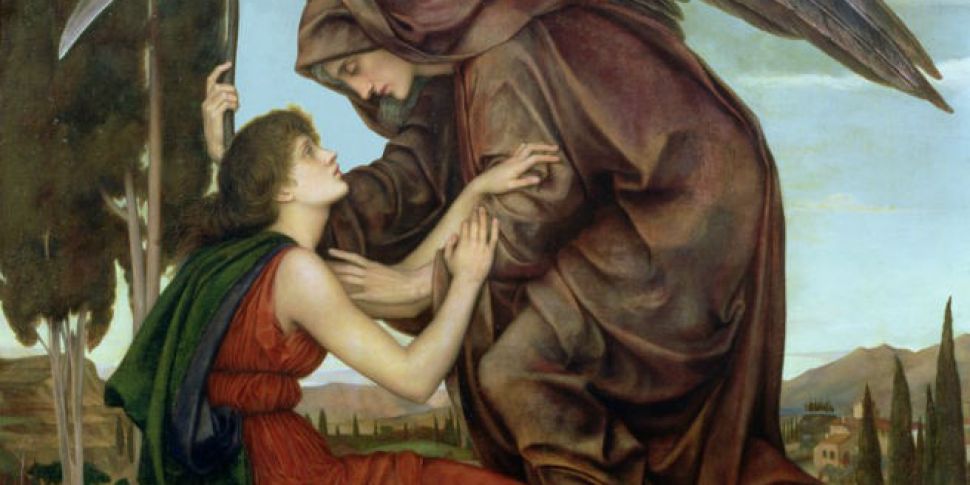'And I looked, and behold a pale horse; and his name that sat on him was Death' - Revelations 6:8
Since mankind became aware of the inevitability of our own death our final end has held a place of prominence in our psyche. Our oldest construct seems to be a temple with wards trying to keep out the deadly forces hiding in the dark and some of our earliest evidence of human life come from ritualised burials. Even the earliest signs of human culture, the painted outlines of hands on cave walls, could well be the glorious acknowledgement of our own temporal nature.
As history progressed so too did our dealing with death. In temples and sacred sites around the world humans laid those who had passed away to rest in a variety of different ways. Some were curled fetus like into the earth, others were burned on pyres, while others still were left to be reclaimed by nature through scavengers' maws. Stories naturally sprouted around these practices and we began to hear of jackal-headed gods feasting on the hearts of the dead or monstrous three headed dogs overlooking an ocean as a ferryman saw the souls of the dead to the unreachable realm of the dead. -'The Barque of Charon' by Jose Benlliure Y Gil La Barca de Caronte
-'The Barque of Charon' by Jose Benlliure Y Gil La Barca de Caronte
Soon death itself became anthropomorphised as people tried to cope with the increasing proximity to loss brought about by the rise of civilisation and diseases incubated by city life. With tougher living conditions, larger social groups, and a poorer diet death in settled life cast a longer shadow than his nomadic hunter-gatherer cousin. It was as the bubonic plague rampaged across Europe that the figure of a robed grim reaper came to the fore and today the skeletal form harvesting life with a long scythe is a familiar fictional figure.
In works like Charles Dickens' Christmas Carol, Terry Pratchett's Discworld series, James Bond: Live and Let Die, and the Mexican Day of the Dead we see death brought to life as skeletal character. Other works, like Philip Pullman's His Dark Materials series with its personal deaths befriending us more day by day, have anthropomorphised death differently. The fact remains the same; we write about death to familiarise ourselves with it and make its coming less daunting. -A Medieval representation of Death by Hans Holbein the Younger
-A Medieval representation of Death by Hans Holbein the Younger
In The Emperor of All Maladies: A Biography of Cancer Dr Siddhartha Mukherjee builds on this tradition of writing death into the world further by telling the tale of today's most feared enemy; cancer. Today roughly 13% of deaths, approximately 7 million, around the world are caused by cancer. Considering this figure doesn't take into account the amount of people who struggle to live with the disease or their affected loved ones it is easy to understand why cancer casts such a long and dark shadow over our society. The Emperor of All Maladies attempts to tell the story of cancer from its earliest discovery through to its existence today and, in the process, make cancer knowable and, therefore, less daunting.
It was after having to face a patient who wanted to know what it was they would be battling that Dr Mukherjee decided to embark upon this task of writing cancer's biography. Until this point cancer had been largely unknowable and Dr Mukherjee had no easy way of familiarising his patients with what they would be facing; there were no books available to them and his understanding of the disease revolved around medical terms and the names of drugs. But it would not be enough to merely tell the story of what cancer was or how it was to be treated. To provide a true tool to combat the daunting figure of cancer Dr Mukherjee would have to tell the full story of cancer and its relationship with humans; and so Dr Mukherjee struck upon the idea of writing cancer's biography. -A representation of Yama, the Hindu god of death
-A representation of Yama, the Hindu god of death
While there have been diseases more deadly than cancer, the external nature of things like malaria or polio have made them a more manageable enemy. We can face these deadly killers and their transporting hosts as we do not feel helpless in our struggle against these foreign threats whose mosquito steeds can be crushed or whose stagnant water strongholds can be purified. It is the insidious nature of cancer which terrifies us. Like dissident citizens of a state, cancerous cells erupt within us; spreading malignant chaos through their self-detonating nuclei.
Across its almost 600 pages The Emperor of All Maladies tells the story of this terrifying disease; from its earliest acknowledgment on Egyptian papyrus, 'a bulging tumor...like touching a ball of wrappings', to cancer treatment today. Through 3600 years of human history Dr Mukherjee tells us how people first started to try and combat the spread of these malign mutations with brutal disfiguring surgeries and how the rules of engagement changed as the medical world finally began to understand the nature of the pervasive threat that was 'the big C'. -The weighing of the heart ritual as depicted in the ancient Egyptian Book of the Dead of Sesostris
-The weighing of the heart ritual as depicted in the ancient Egyptian Book of the Dead of Sesostris
Listen back as Susan talks with the consultant oncologist Senator John Crown about the New York Times best book of the year, 2010, and winner of the Pulitzer Prize for General Nonfiction, 2011, Dr Siddhartha Mukherjee's The Emperor of All Maladies: A Biography of Cancer. Find out about the history and background of cancer and why this book can be such an important tool in the arsenal of the millions of people who are battling cancer, or whose loved ones are battling cancer, everyday.
In the second part Susan will talk with Vanessa O'Loughlin about her project to bring writers workshops online with www.writing.ie









